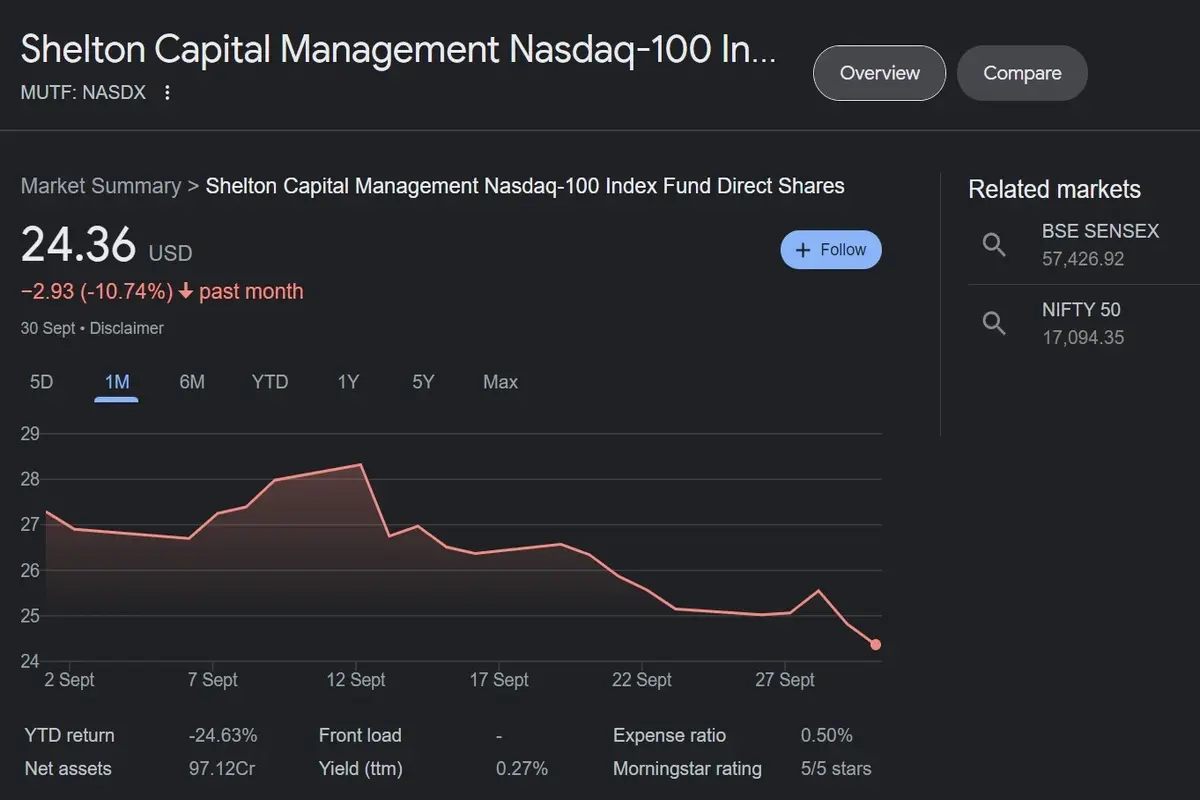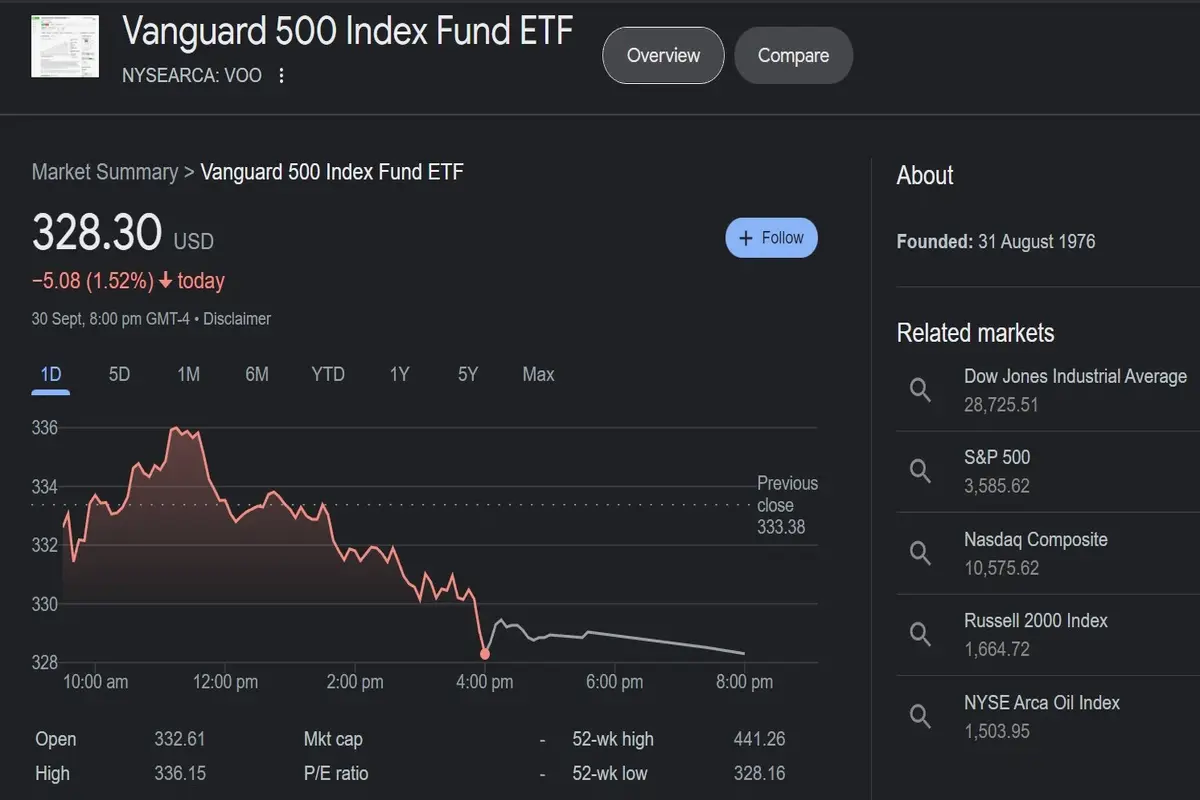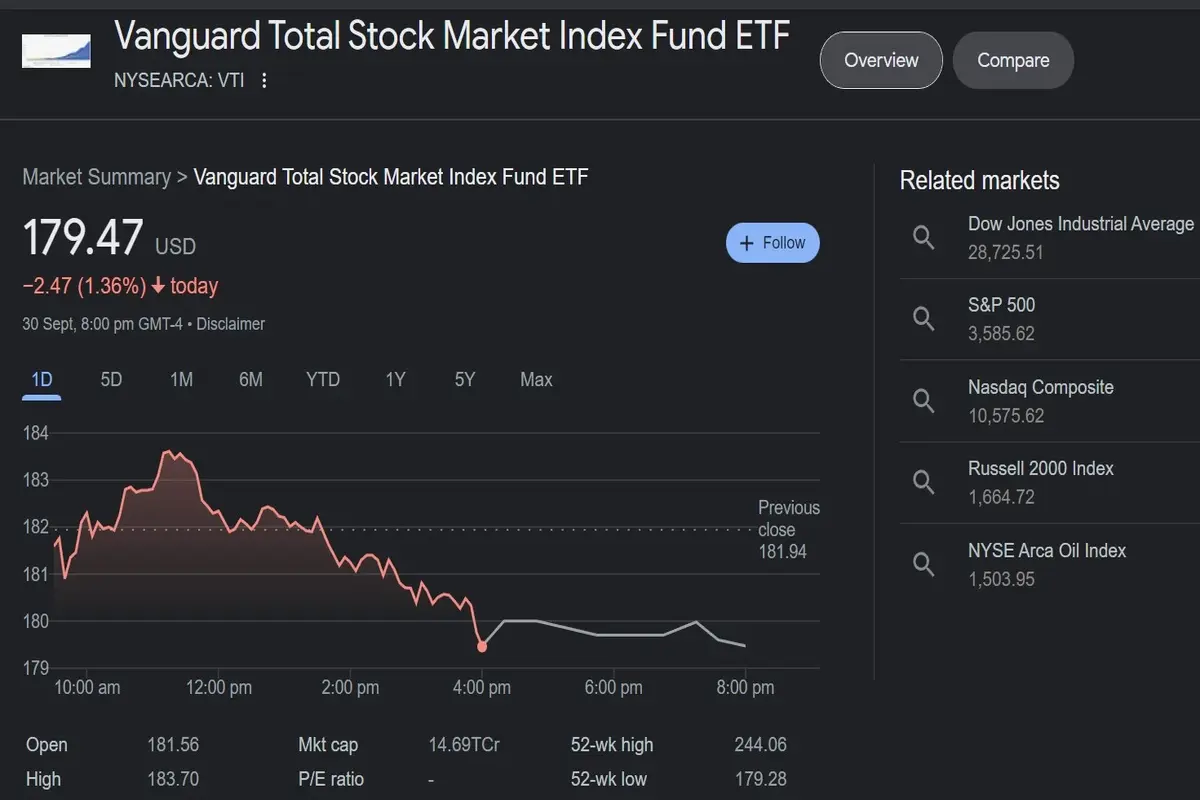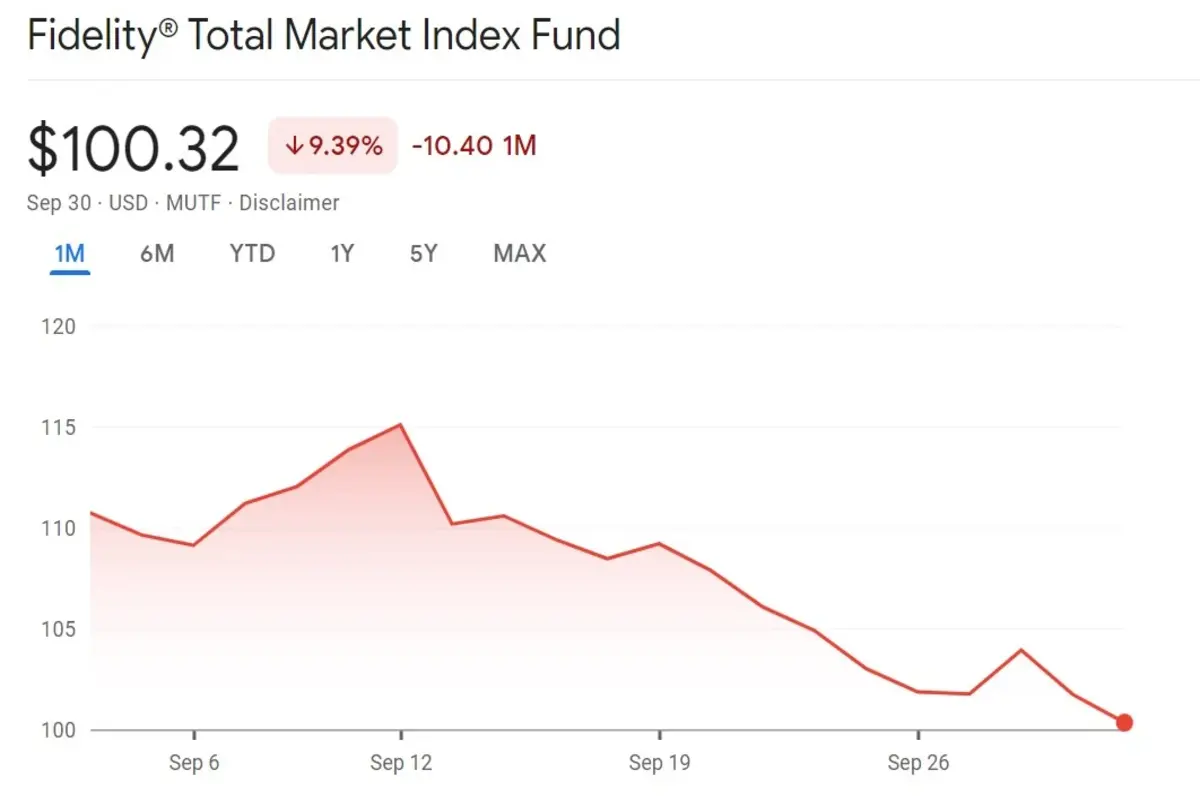Do you want an investment that can give you instant diversification, is tax-efficient, has low fees, is easily traded, and has a solid track record of good returns? I think I can hear you saying, “Of course,” loud and clear.
Well, you can get it with “Index Funds.” Of course, that isn’t a massive secret since I’ve shared about Index Funds a lot on the “Investocker.com” website.
But in this article, we’re going to go a bit further and identify three specific Index Funds that you probably want to start your portfolio with, which will stand the test of time. If you want three Index Funds you can hold on to for life, keep reading!
Also Read: Guide To Invest In Penny Stocks (2022)
Plus, not only will I share with you the Index Fund but also a similarly performing ETF (Exchange Traded Fund) that you might want to check out! Let’s go!
#1 Shelton NASDAQ 100 Index Direct
Number one is “Shelton NASDAQ 100 Index Direct”; the ticker symbol is NASDX. The ETF equivalent is “Investco’s NASDAQ ETF,” ticker symbol (QQQ). The S&P 500, Dow Jones, and NASDAQ are the most well-known market performance indexes.
Simply put, the S&P 500 is a compilation of the 500 biggest companies by market capitalization. While on the other hand, there are only 30 companies in the Dow Jones index. In reality, both qualitative and quantitative criteria were used to rank the companies on this list.
They must meet specific criteria and uphold a particular reputation. These contain popular blue-chip companies. After the S&P comes the Nasdaq, which contains 3,000 different companies.
Also Read: How To Generate Passive Income From Dividend Investing?
They are heavily geared toward the technology sector and must be listed on the NASDAQ Stock Exchange. As a result, the stocks in this Index Fund will be heavily biased in favor of the technology sector.
What Index Is The Best For Investment?
Well, that depends on your financial objectives. The performance of the entire market will be more accurately reflected by the S&P 500. The volatility of the Dow Jones will typically decrease, so more of your tried-and-true businesses can be found here. And the NASDAQ will continue once more to favor the technology sector.
Sadly, the famous brokerage firm “Vanguard” does not provide an Index Fund that closely follows the NASDAQ, but there are others that do.
In January 2000, The “Shelton NASDAQ Fund” was established. It has a 0% expense ratio, which means that for every $10,000 you invest, it will cost you $50 and a 22.4% ten-year return.
Also Read: Fundamental Vs Technical Analysis: Which is Best For Stock Analysis?
As I mentioned, the ETF equivalent is QQQ. The truth is that ETFs and Index Funds share a lot of characteristics. It has an expense ratio of zero (2%) and a ten-year average return rate of 22.53%, costing you $20 for every $10,000 invested.
#2 Vanguard 500 Index Fund or Fidelity 500 Index Fund
Number 2 is the “Vanguard 500 Index Fund,” ticker symbol, VFIAX, or the “Fidelity 500 Index Fund” (FXAIX). The most popular index for tracking the stock market is the S&P 500, and these funds hold whatever the S&P 500 consists of.
And they replicate the index in those precise ratios. They both hold the same assets. The expense ratio for the Vanguard S&P 500 Fund is zero percent or $4 for every ten thousand dollars invested.
Furthermore, a $3,000 initial investment is required, and the ten-year average return is 16.51%.
I realize that the initial lump sum of $3,000 can be a bit of a barrier for new investors. Still, it’s important to note that if your company continues to use Vanguard for its 403(b), 401(k), or Simple IRA retirement plans, you can choose any Vanguard funds, and the initial minimum is waived. Just something to keep in mind.
Also Read: What Is Sustainable Investing & How Does It Work? (2022)
However, you can always go with “Fidelity” if you’re investing on your own and not through a company and finding it challenging to make that initial investment. With a 0.15% expense ratio, the “Fidelity S&P 500 Fund” will cost you $15 for every $10,000 you invest.
Additionally, there is no initial investment requirement, and the fund’s average ten-year rate of return is 16.54%. If you’re looking for an ETF equivalent, check out the ticker symbol “VOO,” which contains most of the same holdings but has the advantage of being exchange-traded, which means you can buy and sell it just like a stock.
#3 Vanguard Total Stock Market Index Fund
Finally, number three is the “Vanguard Total Stock Market Index Fund,” ticker symbol VTSAX. With “Fidelity,” you can check out the “Fidelity Total Stock Market Index Fund” or ticker symbol FZROX.
Many “Vanguard Index Funds” and “Fidelity Index Funds” have the same stocks and bonds in their portfolios. But I think Fidelity has made some small steps forward in recent years.
For example, some of their Index Funds have an expense ratio of 0% and a minimum initial investment of $0. Now, many investors are very interested in those zeros.
It’s important to remember that the transaction costs for these Index Funds will be passed on to you, the investor, in some way. So technically, they’re not zero but as close as possible.
Also Read: 7 Steps To Become Wealthy with Modest Salary (2022)
If I were starting as an investor today, I might be more likely to choose Fidelity because there is no minimum investment and no fees. The Fidelity Zero Index Funds have been around since 2018 and are relatively new.
However, they are an excellent choice for people just starting to invest. The total stock market fund holds every stock. There are big companies, small companies, and everything in between, including companies in the tech sector, the health care sector, consumer staples, and other areas.
They show precisely what the stock market is like as a whole. I like investing in the whole economy, so this is my top choice. And just like with funds that follow the S&P 500, stocks in this fund are held in the same proportion as their market share.
So, more prominent companies like “Apple,” “Microsoft,” and “Google” are held in a more significant proportion, while smaller companies have less representation.
Also Read: How To Get ‘Roth IRA’ Through Backdoor Conversion?
The expense ratio of the Vanguard Total Stock Market Index Fund is 0%, which means you will pay $4 for every $10,000 you invest. The traditional minimum investment is $3,000, and the average return over the last ten years has been 16.29%.
The expense ratio for the Fidelity Total Stock Market Index Fund is 0%. Remember that these transaction costs will be passed on to you as an investor and that the initial minimum investment is zero dollars.
Since this fund was only started in 2018, it doesn’t have a ten-year average, but the Fidelity Total Stock Market Index Fund, the non-zero version, has a ten-year average return of 16.25%. So that can be a point of reference.
And, if you’re looking for an ETF equivalent for these total stock market index funds, then definitely check out “VTI.” It is one of the most famous ETFs out there, and Vanguard did a great job of mirroring the holdings in their “VTSAX Index Fund” quite closely.
Conclusion
Of course, this isn’t an exhaustive list of Index Funds – is there such a thing? – but if you’re starting, you probably can’t go wrong starting with these three funds that you can hold on to for life.
As I mentioned in the beginning, investing in Index Funds is one of the smartest investment moves you can make, especially this year. But always be sure to do your due diligence and research your options.




